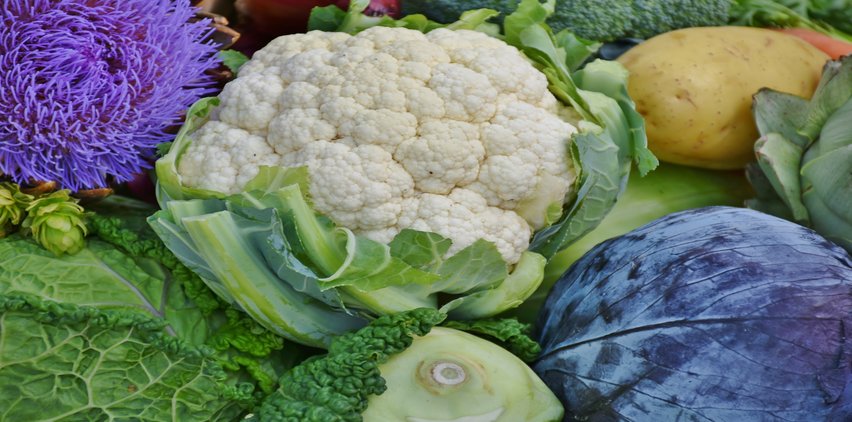Top Fall Foods to Eat to Lose Weight Fast
October 10, 2019 | Categories: Weight Loss & Nutrition
Before you start thinking “bulking season” is coming which translates to hiding extra pounds under bulky sweaters and hoodies, do your gut some good by using autumn’s harvest to leverage weight loss. Eating these fall foods for weight loss will help keep you feeling full and satisfied, so you can reach your physique goals before the winter foods and holiday temptations arise.
“If you’re looking to add food to promote weight loss, keep in mind it needs to be in combination with your overall calorie intake while staying active, because of course, we can add in all the foods we want, but if those two things aren’t balanced, [adding in these foods] doesn’t matter as much,” says Molly Morgan, R.D., Creative Nutrition Solutions, based in upstate N.Y.
Top fall foods to help with weight loss
Apples
Mom’s been packing them in your lunchbox each fall for good reason. These fiber-packed fruits are in peak season now, and their nutrients can help you reach your goals without filling you out.
Apples are rich in the compound, flavonoid, which is linked to less weight gain, according to research.
“Apples are an excellent source of both soluble and insoluble fiber, which can help fill you up, as well as keep your digestion moving,” says Keri Glassman, R.D., founder of NutritiousLife.com.
Pears
Pears also contain flavonoids. Research that followed over 124,000 American men and women for 24 years found that those who had the highest flavonoid consumption experienced less weight gain over that same time. A 2003 study of overweight women found that those who consumed apples or pears lost about 2.6 pounds more than the women who ate oat cookies instead of the fruit. Pears are a great seasonal snack for satisfying a sweet tooth with 6 grams of fiber in a medium serving, 24% of your daily recommended serving.
Grapefruit
Besides the good ole vitamin C, fiber, folic acid and potassium, grapefruit also contains powerful antioxidants naringin and lycopene which may lower LDL (bad cholesterol), help prevent atherosclerosis, and contribute to overall heart health, Glassman says. “They’re a standout for breakfast and snacking, but their ability to stand in as a satisfying post-dinner option makes them a great weight loss food in the colder months,” says Glassman.
Squash
‘Tis the season to finally master roasting squash–since it’s a great base for a ton of healthy fall recipes. “Squash all are rich in vitamins A, C, and K, and will change your definition of cold weather comfort food, making the ideal replacement for other dense, calorie laden winter options,” says Glassman. “They’re extremely versatile, and can be eaten roasted, mashed, used in soups–the possibilities are endless!”
Pumpkin
“What I love about pumpkin is that it’s only 50 calories per cup and there are so many fun different ways to have pumpkin, whether it’s making it into a soup or mashing it, and it delivers some fiber and protein as well,” says Morgan.
Bake the pumpkin the same way you would a squash. Start with a smaller pumpkin. You can scoop out the seeds, wash, dry and roast the pumpkin seeds for a snack if you want. Slice the now-seedless pumpkin into long strips or wedges, then roast it on a parchment-lined baking sheet until it’s nice and tender, about 35 to 40 minutes at 400 degrees F. Also, canned pumpkin is a quick way to get extra pumpkin into your eating routine. Add it to oatmeal, smoothies, or baked goods recipes.
Brussels Sprouts
These fall vegetables are on Morgan’s weight loss foods list because they have a low glycemic index. “While all fruit and vegetable intake is important, there are studies that do link higher consumption of lower glycemic fruits and veggies to spur your weight loss,” says Morgan.
In that 24-year span cohort study, consumption of starchy vegetables, including corn, peas, and potatoes, was associated with weight gain. Vegetables having both higher fiber and lower glycemic load were more strongly inversely associated with weight change compared with lower-fiber, higher-glycemic-load vegetables.
“Brussels sprouts and broccoli are two lower glycemic vegetables that are great to incorporate this fall,” she says.
Morgan’s favorite way to eat Brussels sprouts is to slice them in half, spray them lightly with a little bit of oil and balsamic vinegar, and roast them for about 30 minutes in a preheated 400 degrees F oven until they get really soft. “Then any of the leaves of the Brussels sprouts that have fallen off get super crunchy and crispy, and they’re delicious!” says Morgan.
Cauliflower
It’s no secret that cauliflower as a lower-carbohydrate comfort food substitute is a trend that’s here to stay.
“What I think is amazing about cauliflower, and most people may not believe it until you actually try it, but it really can take on the flavor of whatever you cook it with,” says Morgan. “I think it’s such a great substitute. I’ve been a big fan of cauliflower rice, I think it’s a great way to have a stir-fry if you’re looking to cut down on carbs or grains.”
Cauliflower has 2 grams of protein, 3 grams of fiber and 25 calories per cup.


Leave a Reply